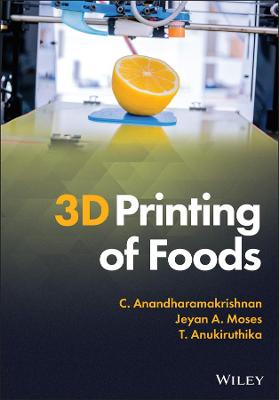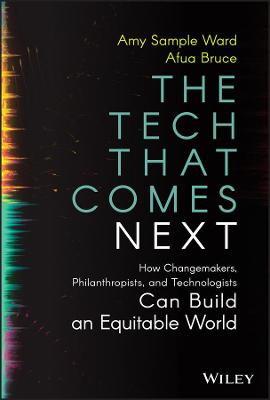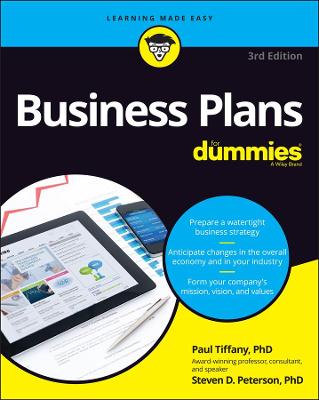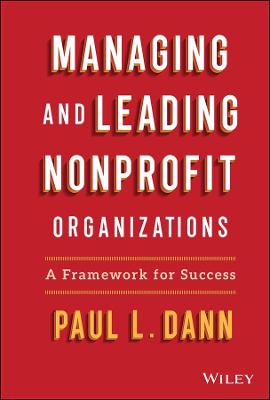3D Printing of Foods
 -15%
portes grátis
-15%
portes grátis
3D Printing of Foods
Anukiruthika, T.; Anandharamakrishnan, C.; Moses, Jeyan A.
John Wiley & Sons Inc
04/2022
576
Dura
Inglês
9781119669821
15 a 20 dias
1232
1 Introduction to 3D Printing Technology 1
1.1 Introduction 1
1.2 Digital Manufacturing: From Rapid Prototyping to Rapid Manufacturing 3
1.3 Milestones in 3D Printing Technology 4
1.4 Different Historical Eras in 3D Printing 5
1.4.1 Ancient Age 5
1.4.2 Middle Age 5
1.4.3 Modern Age 5
1.5 Prospects of 3D Food Printing 6
1.6 Design Considerations of 3D Printer 7
1.6.1 Printer Configurations 7
1.6.2 Components of a Typical 3D Printer 10
1.6.2.1 Enclosure, Build Plate, and Guide Rails 10
1.6.2.2 Mechanical Drive Systems 12
1.6.2.3 Microprocessor Controlling System 12
1.7 Software Requirements and Hardware Integration 13
1.8 Designing, Digital Imaging, and Modelling 16
1.8.1 Image Acquisition, Processing, and Modelling 16
1.8.2 Repairing and Post-Processing 20
1.9 Food Printing Platforms 21
1.9.1 Universal Platform 21
1.9.2 User-Defined Platform 21
1.9.3 Applicability of User Interface Systems 23
1.10 Comparison Between Food 3D Printing and Robotic Food Manufacturing 23
1.11 Conclusion 24
References 24
2 3D Printing Approaches 28
2.1 Introduction 29
2.2 Additive Manufacturing 30
2.3 3D Food Printing Technologies 33
2.4 Extrusion-Based Printing 35
2.4.1 Working Principle, System Components, and Process Variables 35
2.4.2 Classification of the Extrusion-Based 3D Printing System 39
2.4.2.1 Hot-Melt Extrusion 39
2.4.2.2 Cold Extrusion 41
2.4.2.3 Hydrogel-Forming Extrusion 42
2.5 Selective Sintering 44
2.5.1 Working Principle, System Components, and Process Variables 45
2.5.2 Classification of Selective Sintering System 46
2.5.2.1 Selective Laser Sintering 46
2.5.2.2 Selective Hot Air Sintering and Melting 47
2.6 Inkjet Printing 47
2.6.1 Working Principle, System Components, and Process Variables 48
2.6.2 Classification of Inkjet Printing 49
2.6.2.1 Drop-On-Demand Inkjet Printing 49
2.6.2.2 Continuous Inkjet Printing 50
2.7 Binder Jetting 50
2.7.1 Working Principle, System Components, and Process Variables 51
2.7.2 Classification of Binder Jetting 52
2.8 Bio-Printing 53
2.8.1 Working Principle, System Components, and Process Variables 54
2.8.2 Classification of Bioprinting 55
2.8.2.1 Extrusion-Based Bioprinting 55
2.8.2.2 Droplet-Based Bioprinting 56
2.8.2.3 Photocuring-Based Bioprinting 57
2.9 Future Prospects and Challenges 57
2.10 Conclusion 58
References 59
3 Food Components and Their Role in Printability 67
3.1 Recipes in 'Print and Eat Technology' 67
3.2 Role of Food Constituents 68
3.3 Panorama of Food Printing 68
3.4 Insights on the Printability of Different Food Constituents 69
3.4.1 Carbohydrates and Starch 69
3.4.2 Proteins and Amino Acids 71
3.4.3 Lipids and Fatty Acids 73
3.4.4 Dietary Fibre 75
3.4.5 Other Additives 77
3.5 Classification of Foods Based on Their Printability 79
3.6 Conclusion 79
References 80
4 Factors Affecting the Printability of Foods 83
4.1 Introduction 84
4.2 Factors That Affect Extrusion 3D Printing 85
4.3 Intrinsic Properties 85
4.3.1 Physical Properties 85
4.3.2 Rheological Properties 88
4.3.2.1 Steady Shear Rheology 89
4.3.2.2 Dynamic Shear Rheology 92
4.3.2.3 Yield Stress 95
4.3.2.4 Complex Viscosity 97
4.3.2.5 Thixotropy and Creep Recovery 98
4.3.2.6 Qualitative and Quantitative Assessment of Rheology 100
4.3.3 Mechanical Properties 101
4.3.3.1 Extrusion Assay 101
4.3.3.2 Textural Profile Analysis 102
4.3.4 Frictional Properties 105
4.3.5 Thermal Properties 107
4.3.6 Dielectric Properties 109
4.4 Extrinsic Properties 111
4.4.1 Optimization of Material Supply 111
4.4.2 Optimization of 3D Printing Process Variables 113
4.4.2.1 Nozzle Size and Nozzle Height 113
4.4.2.2 Printing Speed 115
4.4.2.3 Extrusion Rate 116
4.4.2.4 Printing Rate 118
4.4.2.5 Infill Percentage and Infill Pattern 121
4.4.2.6 Extruder Offset and Retraction Length 123
4.5 Factors Affecting Other 3D Printing Technologies 126
4.5.1 Selective Laser Sintering 126
4.5.2 Inkjet Printing and Binder Jetting 127
4.6 Conclusion 129
References 130
5 Printability and Techniques 138
5.1 Introduction 139
5.2 Printability and Material Characteristics 140
5.3 Material Characterization Techniques 141
5.3.1 Structural Imaging 142
5.3.1.1 Scanning Electron Microscopy 142
5.3.1.2 X-ray Microtomography 145
5.3.1.3 Confocal Laser Scanning Microscopy 149
5.3.2 Crystal Morphology 153
5.3.2.1 X-ray Diffraction 153
5.3.2.2 Small-Angle X-ray Scattering 156
5.3.3 Molecular and Chemical Analysis 159
5.3.3.1 Nuclear Magnetic Resonance Imaging 159
5.3.3.2 Fourier Transform Infrared Spectroscopy 162
5.3.4 Thermal Analysis 164
5.3.4.1 Differential Scanning Calorimetry 164
5.4 Assessment of Printability 166
5.4.1 Line Test 166
5.4.2 Lattice Test 168
5.4.3 Cylinder Test 168
5.4.4 Extrusion Test 168
5.4.5 Assessment of the Dimensional Stability 170
5.4.6 Assessment of the Handling Properties 176
5.5 Printability Evaluation of 3D Printed Constructs 176
5.5.1 Shape Resemblance 176
5.5.2 Printing Percentage 177
5.5.3 Dimensional Deviation and Appearance 177
5.5.4 Dimensional Stability 179
5.5.5 Ternary Representation of Printability 179
5.5.6 Correlation of Printability and Rheology 179
5.5.7 Rational Approach for Printability 181
5.6 Conclusion 182
References 182
6 Natively Printable Foods 190
6.1 Introduction 190
6.2 Natively Printable Materials as Basic Food 3D Printing Formulations 191
6.3 Printability: Concepts and Underlying Mechanisms 192
6.4 Types of Natively Printable Materials 194
6.4.1 Cereal-Based Material Supplies 195
6.4.2 Sugar-Based Material Supplies 206
6.4.3 Gel-Based Food Systems 209
6.5 Insights and Scope for Commercialization 214
6.6 Concluding Remarks 215
References 215
7 Pre-Processing of Non-Printable Foods 221
7.1 Introduction 221
7.2 Natively Non-Printable Materials 222
7.2.1 Traditional Foods: What Makes Them 'Non-Printable'? 223
7.2.2 Role of Food Hydrocolloids in Improving Printability 224
7.2.3 Role of Other Additives 229
7.3 Pre-Processing and Formulations for 3D Printing 230
7.3.1 Plant-Based Cellular Foods 230
7.3.2 Animal-Based Cellular Foods 235
7.4 Post-Printing Stability of the Printed 3D Constructs 237
7.5 Scope of Non-Printable Materials for 3D Printing Applications 239
7.6 Conclusion 240
References 241
8 Alternative Ingredients Used in Food Printing 247
8.1 Introduction 247
8.2 Alternative Food Sources and the Sustainability Perspective 248
8.3 Rationale of Alternative Material Supplies 250
8.4 Innovative Food Sources 252
8.4.1 Uncommon Food Sources 252
8.4.2 Unexplored Food Sources 254
8.4.3 Under-Utilized Food Sources 255
8.5 3D Printing of Alternative Ingredients 256
8.5.1 Insects as Food 257
8.5.2 Microorganisms as Food 258
8.5.3 By-products of Fruits and Vegetables Processing 260
8.5.4 Others 261
8.6 Future Trends and Perspectives 263
8.7 Challenges and Limitations 263
8.8 Conclusion 264
References 265
9 Post-Processing of 3D Printed Foods 273
9.1 Introduction 273
9.2 Material Supply Requirements for Food 3D Printing 274
9.3 Post-Processing Methods 277
9.3.1 Drying 277
9.3.2 Frying 279
9.3.3 Baking 280
9.3.4 Microwave Cooking 282
9.3.5 Sous Vide Cooking 285
9.3.6 Low-Temperature Processing 286
9.3.7 Other Post-Processing Methods 286
9.4 Novel Post-Processing Methods 289
9.5 Assessment of Post-Processing Characteristics 293
9.6 Sensorial Characterization 297
9.6.1 Qualitative Analyses 297
9.6.2 Quantitative Analyses 300
9.7 Requisites, Challenges, and Future Trends 301
9.8 Conclusion 303
References 304
10 4D Printing Technology 310
10.1 Introduction 311
10.2 4D Printing: Concept and Functionality 312
10.3 Smart Materials for 4D Printing 316
10.3.1 Shape Memory Alloys 316
10.3.2 Shape Memory Polymers 317
10.3.3 Shape Memory Composites 318
10.4 Mechanism of Shape Memory Polymers 319
10.5 Shape Memory Effect in 4D Printing 319
10.5.1 One-Way SME 321
10.5.2 Two-Way SME 322
10.5.3 Three-Way SME 322
10.6 Stimuli-Responsive Systems 323
10.6.1 Thermo-Responsive 323
10.6.2 Moisture-Responsive 323
10.6.3 Photo-Responsive 324
10.6.4 Electro-Responsive 324
10.6.5 Magneto-Responsive 324
10.7 Programming Strategies 325
10.7.1 Bending Strategy 326
10.7.1.1 Multilayer Approach 326
10.7.1.2 Material Gradients 329
10.7.1.3 Localized Activation 330
10.7.2 Buckling Strategy 331
10.7.2.1 Material Tessellation 331
10.7.2.2 In-Plane Material Gradients 332
10.7.2.3 Non-Homogenous Exposure 332
10.7.2.4 Mechanically Induced Buckling 333
10.7.3 Sequential Shape-Shifting 333
10.8 Spontaneous Transformation in Foods 334
10.9 Recent Advancements in 4D Food Printing 336
10.9.1 pH-Triggered Colour Transformation 336
10.9.2 Dehydration-Triggered Colour and Flavour Transformation 339
10.9.3 Dehydration-Triggered Shape Transformation 343
10.9.4 Temperature-Triggered Shape Transformation 345
10.10 Future Trends and Challenges 345
10.11 Conclusion 347
References 348
11 Applications of Food 3D Printing Technology 355
11.1 Introduction 355
11.2 Applications of 3D Food Printing 358
11.2.1 Food Customization 358
11.2.2 Personalized Foods and Digitalized Nutrition Control 361
11.2.3 Delivery of Specific Foods with Unique Functionality 364
11.2.4 Food Model Prototyping 366
11.2.5 Sustainable Approach for Conversion of Waste into Wealth 367
11.2.6 Food Packaging Designs 370
11.3 Future Outlook of 3D Food Printing 372
11.3.1 Healthy Dietary Practice 372
11.3.2 Complementing Existing Food Processing Practices 373
11.3.3 Kitchens with Food 3D Printers? 375
11.4 Conclusion 376
References 377
12 Integrating Encapsulation Technique with 3D Food Printing 384
12.1 Introduction 384
12.2 Integration of 3D Printing and Encapsulation 386
12.2.1 Encapsulation Followed by 3D Printing 388
12.2.2 Simultaneous Encapsulation and 3D Printing 392
12.3 Structure Modified Delivery Systems 394
12.3.1 Micro and Nano Emulsions 395
12.3.2 Lipid-Based Delivery Systems 396
12.3.3 Solid Lipid Nanoparticles 397
12.3.4 Nanoliposomes 398
12.3.5 Nanostructured Lipid Carriers 399
12.4 Techniques and Methods for Micro and Nanoencapsulation 400
12.4.1 Polymer-Lipid Based Encapsulation Techniques 401
12.4.1.1 Nanoprecipitation 401
12.4.1.2 Emulsification-Solvent Evaporation 401
12.4.1.3 Inclusion Complexation 402
12.4.1.4 Coacervation 404
12.4.1.5 Supercritical Fluid Technique 405
12.4.1.6 Fluid Bed Coating 406
12.4.2 Drying Techniques for Micro and Nanoencapsulation 408
12.4.2.1 Spray Drying 409
12.4.2.2 Freeze-Drying 415
12.4.2.3 Spray-Freeze-Drying 417
12.4.2.4 Conductive-Hydro Drying 420
12.5 Future Outlook and Prospects of Synergistic Approaches 422
12.6 Barriers and Research Constraints 424
12.7 Conclusion 426
References 426
13 Integrating Electrohydrodynamic Processes with Food 3D Printing 435
13.1 Introduction 435
13.2 Encapsulation Techniques Involving Electrohydrodynamic Process 436
13.2.1 System Components and Process Parameters 437
13.2.2 Encapsulation via Electrospraying 440
13.2.3 Encapsulation via Electrospinning 442
13.3 Applications in the Food Industry 445
13.3.1 Encapsulation of Bioactives and Probiotics 445
13.3.2 Enzyme Immobilization 448
13.3.3 Functional Food Packages 451
13.3.4 Food Coatings 454
13.4 Integrating 3D Printing with Electrospraying/ Electrospinning 458
13.5 Future Perspectives and Challenges 461
13.6 Conclusion 462
References 463
14 Globalization of Printed Foods and Consumer Perception to 3D Printed Foods 468
14.1 Introduction 468
14.2 Circular Economy in Food Printing 470
14.3 Globalization of Food 3D Printing Technology 471
14.4 New Horizons of 3D Food Printing 473
14.4.1 Strategic Market Foresight 474
14.4.2 Strategic Shifts and Economic Paradigms 475
14.4.3 Decentralization and Localization of Production 476
14.4.4 Role of Industry 4.0 477
14.5 3D Food Printing - A Classic Disruptive Technology 479
14.5.1 Food Choice and Consumer Behaviour 479
14.5.2 On Production Patterns 481
14.5.3 Sustainability and Value Addition 482
14.5.4 Anti-Counterfeiting and Food Authentication 483
14.6 Technological Barriers and Challenges 485
14.7 Conclusion 486
References 487
15 Food Industry Market Trends and Consumer Preferences 493
15.1 Introduction 494
15.2 Food Service Market: Consumption to Prosumption 495
15.3 Food Decisions and Consumer Attitude 497
15.3.1 Food Neophobia vs Food Neophilia 498
15.3.2 Food Choice Motives 500
15.3.3 Sensorial and Sustainable Claims 501
15.4 Approaches and Methods to Assess Consumer Perception 503
15.4.1 Theoretical Approaches 504
15.4.1.1 Quantitative Methods 504
15.4.1.2 Means-end Chain Theory 504
15.4.1.3 Social Science Models 505
15.4.1.4 Economic Models 505
15.4.2 Experimental Approaches 505
15.4.2.1 Surveys 505
15.4.2.2 Conjoint Analysis and Choice-Based Conjoint Analysis 506
15.4.2.3 Heuristics 506
15.5 Consumer's Acceptance of Novel Foods 506
15.5.1 Genetically Modified Foods and 3D Printing 508
15.5.2 Food Irradiation and 3D Printing 508
15.5.3 Nanotechnology and 3D Printing 510
15.5.4 Stem Cell Technology and 3D Printing 511
15.5.4.1 In-Vitro Cultured Meat and 3D Printing 511
15.5.5 Miscellaneous Technologies 511
15.5.5.1 Alternative Proteins and 3D Printing 511
15.5.5.2 Meat Analogues and 3D Printing 512
15.5.6 Presumption and Outcomes of Novel Food Technologies 513
15.6 Intervention Tools for Enhancing Consumer Knowledge 513
15.6.1 Business Schemes and Public Policies 514
15.6.2 Social Media and Communication 514
15.6.3 Academia and Scientific Events 515
15.6.4 Internet and e-commerce 515
15.7 Trends, Advancements, and Future Directions 516
15.8 Conclusion 518
References 519
16 Safety, Challenges, and Research Needs 525
16.1 Introduction 525
16.2 Implications of Food Printing 527
16.3 Applicability and Storability 532
16.4 Food Safety Considerations 533
16.4.1 Process and Product Safety 534
16.4.1.1 Nature of Raw Materials 534
16.4.1.2 Processing and Design Factors 535
16.4.1.3 Finished Product Safety 536
16.4.1.4 Working Premises and Personnel Safety 536
16.4.2 Acceptance of 3D Printed Foods 537
16.4.2.1 Food Poisoning, Food Allergy, and Cross-Contamination 538
16.4.2.2 Long-Term Health Effects and Illness 539
16.5 Legal Framework and Regulations 539
16.5.1 Packed 3D Printed Foods for Mass Population 541
16.5.2 Unpacked 3D Printed Foods at Restaurants and Domestic Kitchen 543
16.6 Challenges and Research Needs 543
16.7 Conclusion 544
References 544
Index 549
1 Introduction to 3D Printing Technology 1
1.1 Introduction 1
1.2 Digital Manufacturing: From Rapid Prototyping to Rapid Manufacturing 3
1.3 Milestones in 3D Printing Technology 4
1.4 Different Historical Eras in 3D Printing 5
1.4.1 Ancient Age 5
1.4.2 Middle Age 5
1.4.3 Modern Age 5
1.5 Prospects of 3D Food Printing 6
1.6 Design Considerations of 3D Printer 7
1.6.1 Printer Configurations 7
1.6.2 Components of a Typical 3D Printer 10
1.6.2.1 Enclosure, Build Plate, and Guide Rails 10
1.6.2.2 Mechanical Drive Systems 12
1.6.2.3 Microprocessor Controlling System 12
1.7 Software Requirements and Hardware Integration 13
1.8 Designing, Digital Imaging, and Modelling 16
1.8.1 Image Acquisition, Processing, and Modelling 16
1.8.2 Repairing and Post-Processing 20
1.9 Food Printing Platforms 21
1.9.1 Universal Platform 21
1.9.2 User-Defined Platform 21
1.9.3 Applicability of User Interface Systems 23
1.10 Comparison Between Food 3D Printing and Robotic Food Manufacturing 23
1.11 Conclusion 24
References 24
2 3D Printing Approaches 28
2.1 Introduction 29
2.2 Additive Manufacturing 30
2.3 3D Food Printing Technologies 33
2.4 Extrusion-Based Printing 35
2.4.1 Working Principle, System Components, and Process Variables 35
2.4.2 Classification of the Extrusion-Based 3D Printing System 39
2.4.2.1 Hot-Melt Extrusion 39
2.4.2.2 Cold Extrusion 41
2.4.2.3 Hydrogel-Forming Extrusion 42
2.5 Selective Sintering 44
2.5.1 Working Principle, System Components, and Process Variables 45
2.5.2 Classification of Selective Sintering System 46
2.5.2.1 Selective Laser Sintering 46
2.5.2.2 Selective Hot Air Sintering and Melting 47
2.6 Inkjet Printing 47
2.6.1 Working Principle, System Components, and Process Variables 48
2.6.2 Classification of Inkjet Printing 49
2.6.2.1 Drop-On-Demand Inkjet Printing 49
2.6.2.2 Continuous Inkjet Printing 50
2.7 Binder Jetting 50
2.7.1 Working Principle, System Components, and Process Variables 51
2.7.2 Classification of Binder Jetting 52
2.8 Bio-Printing 53
2.8.1 Working Principle, System Components, and Process Variables 54
2.8.2 Classification of Bioprinting 55
2.8.2.1 Extrusion-Based Bioprinting 55
2.8.2.2 Droplet-Based Bioprinting 56
2.8.2.3 Photocuring-Based Bioprinting 57
2.9 Future Prospects and Challenges 57
2.10 Conclusion 58
References 59
3 Food Components and Their Role in Printability 67
3.1 Recipes in 'Print and Eat Technology' 67
3.2 Role of Food Constituents 68
3.3 Panorama of Food Printing 68
3.4 Insights on the Printability of Different Food Constituents 69
3.4.1 Carbohydrates and Starch 69
3.4.2 Proteins and Amino Acids 71
3.4.3 Lipids and Fatty Acids 73
3.4.4 Dietary Fibre 75
3.4.5 Other Additives 77
3.5 Classification of Foods Based on Their Printability 79
3.6 Conclusion 79
References 80
4 Factors Affecting the Printability of Foods 83
4.1 Introduction 84
4.2 Factors That Affect Extrusion 3D Printing 85
4.3 Intrinsic Properties 85
4.3.1 Physical Properties 85
4.3.2 Rheological Properties 88
4.3.2.1 Steady Shear Rheology 89
4.3.2.2 Dynamic Shear Rheology 92
4.3.2.3 Yield Stress 95
4.3.2.4 Complex Viscosity 97
4.3.2.5 Thixotropy and Creep Recovery 98
4.3.2.6 Qualitative and Quantitative Assessment of Rheology 100
4.3.3 Mechanical Properties 101
4.3.3.1 Extrusion Assay 101
4.3.3.2 Textural Profile Analysis 102
4.3.4 Frictional Properties 105
4.3.5 Thermal Properties 107
4.3.6 Dielectric Properties 109
4.4 Extrinsic Properties 111
4.4.1 Optimization of Material Supply 111
4.4.2 Optimization of 3D Printing Process Variables 113
4.4.2.1 Nozzle Size and Nozzle Height 113
4.4.2.2 Printing Speed 115
4.4.2.3 Extrusion Rate 116
4.4.2.4 Printing Rate 118
4.4.2.5 Infill Percentage and Infill Pattern 121
4.4.2.6 Extruder Offset and Retraction Length 123
4.5 Factors Affecting Other 3D Printing Technologies 126
4.5.1 Selective Laser Sintering 126
4.5.2 Inkjet Printing and Binder Jetting 127
4.6 Conclusion 129
References 130
5 Printability and Techniques 138
5.1 Introduction 139
5.2 Printability and Material Characteristics 140
5.3 Material Characterization Techniques 141
5.3.1 Structural Imaging 142
5.3.1.1 Scanning Electron Microscopy 142
5.3.1.2 X-ray Microtomography 145
5.3.1.3 Confocal Laser Scanning Microscopy 149
5.3.2 Crystal Morphology 153
5.3.2.1 X-ray Diffraction 153
5.3.2.2 Small-Angle X-ray Scattering 156
5.3.3 Molecular and Chemical Analysis 159
5.3.3.1 Nuclear Magnetic Resonance Imaging 159
5.3.3.2 Fourier Transform Infrared Spectroscopy 162
5.3.4 Thermal Analysis 164
5.3.4.1 Differential Scanning Calorimetry 164
5.4 Assessment of Printability 166
5.4.1 Line Test 166
5.4.2 Lattice Test 168
5.4.3 Cylinder Test 168
5.4.4 Extrusion Test 168
5.4.5 Assessment of the Dimensional Stability 170
5.4.6 Assessment of the Handling Properties 176
5.5 Printability Evaluation of 3D Printed Constructs 176
5.5.1 Shape Resemblance 176
5.5.2 Printing Percentage 177
5.5.3 Dimensional Deviation and Appearance 177
5.5.4 Dimensional Stability 179
5.5.5 Ternary Representation of Printability 179
5.5.6 Correlation of Printability and Rheology 179
5.5.7 Rational Approach for Printability 181
5.6 Conclusion 182
References 182
6 Natively Printable Foods 190
6.1 Introduction 190
6.2 Natively Printable Materials as Basic Food 3D Printing Formulations 191
6.3 Printability: Concepts and Underlying Mechanisms 192
6.4 Types of Natively Printable Materials 194
6.4.1 Cereal-Based Material Supplies 195
6.4.2 Sugar-Based Material Supplies 206
6.4.3 Gel-Based Food Systems 209
6.5 Insights and Scope for Commercialization 214
6.6 Concluding Remarks 215
References 215
7 Pre-Processing of Non-Printable Foods 221
7.1 Introduction 221
7.2 Natively Non-Printable Materials 222
7.2.1 Traditional Foods: What Makes Them 'Non-Printable'? 223
7.2.2 Role of Food Hydrocolloids in Improving Printability 224
7.2.3 Role of Other Additives 229
7.3 Pre-Processing and Formulations for 3D Printing 230
7.3.1 Plant-Based Cellular Foods 230
7.3.2 Animal-Based Cellular Foods 235
7.4 Post-Printing Stability of the Printed 3D Constructs 237
7.5 Scope of Non-Printable Materials for 3D Printing Applications 239
7.6 Conclusion 240
References 241
8 Alternative Ingredients Used in Food Printing 247
8.1 Introduction 247
8.2 Alternative Food Sources and the Sustainability Perspective 248
8.3 Rationale of Alternative Material Supplies 250
8.4 Innovative Food Sources 252
8.4.1 Uncommon Food Sources 252
8.4.2 Unexplored Food Sources 254
8.4.3 Under-Utilized Food Sources 255
8.5 3D Printing of Alternative Ingredients 256
8.5.1 Insects as Food 257
8.5.2 Microorganisms as Food 258
8.5.3 By-products of Fruits and Vegetables Processing 260
8.5.4 Others 261
8.6 Future Trends and Perspectives 263
8.7 Challenges and Limitations 263
8.8 Conclusion 264
References 265
9 Post-Processing of 3D Printed Foods 273
9.1 Introduction 273
9.2 Material Supply Requirements for Food 3D Printing 274
9.3 Post-Processing Methods 277
9.3.1 Drying 277
9.3.2 Frying 279
9.3.3 Baking 280
9.3.4 Microwave Cooking 282
9.3.5 Sous Vide Cooking 285
9.3.6 Low-Temperature Processing 286
9.3.7 Other Post-Processing Methods 286
9.4 Novel Post-Processing Methods 289
9.5 Assessment of Post-Processing Characteristics 293
9.6 Sensorial Characterization 297
9.6.1 Qualitative Analyses 297
9.6.2 Quantitative Analyses 300
9.7 Requisites, Challenges, and Future Trends 301
9.8 Conclusion 303
References 304
10 4D Printing Technology 310
10.1 Introduction 311
10.2 4D Printing: Concept and Functionality 312
10.3 Smart Materials for 4D Printing 316
10.3.1 Shape Memory Alloys 316
10.3.2 Shape Memory Polymers 317
10.3.3 Shape Memory Composites 318
10.4 Mechanism of Shape Memory Polymers 319
10.5 Shape Memory Effect in 4D Printing 319
10.5.1 One-Way SME 321
10.5.2 Two-Way SME 322
10.5.3 Three-Way SME 322
10.6 Stimuli-Responsive Systems 323
10.6.1 Thermo-Responsive 323
10.6.2 Moisture-Responsive 323
10.6.3 Photo-Responsive 324
10.6.4 Electro-Responsive 324
10.6.5 Magneto-Responsive 324
10.7 Programming Strategies 325
10.7.1 Bending Strategy 326
10.7.1.1 Multilayer Approach 326
10.7.1.2 Material Gradients 329
10.7.1.3 Localized Activation 330
10.7.2 Buckling Strategy 331
10.7.2.1 Material Tessellation 331
10.7.2.2 In-Plane Material Gradients 332
10.7.2.3 Non-Homogenous Exposure 332
10.7.2.4 Mechanically Induced Buckling 333
10.7.3 Sequential Shape-Shifting 333
10.8 Spontaneous Transformation in Foods 334
10.9 Recent Advancements in 4D Food Printing 336
10.9.1 pH-Triggered Colour Transformation 336
10.9.2 Dehydration-Triggered Colour and Flavour Transformation 339
10.9.3 Dehydration-Triggered Shape Transformation 343
10.9.4 Temperature-Triggered Shape Transformation 345
10.10 Future Trends and Challenges 345
10.11 Conclusion 347
References 348
11 Applications of Food 3D Printing Technology 355
11.1 Introduction 355
11.2 Applications of 3D Food Printing 358
11.2.1 Food Customization 358
11.2.2 Personalized Foods and Digitalized Nutrition Control 361
11.2.3 Delivery of Specific Foods with Unique Functionality 364
11.2.4 Food Model Prototyping 366
11.2.5 Sustainable Approach for Conversion of Waste into Wealth 367
11.2.6 Food Packaging Designs 370
11.3 Future Outlook of 3D Food Printing 372
11.3.1 Healthy Dietary Practice 372
11.3.2 Complementing Existing Food Processing Practices 373
11.3.3 Kitchens with Food 3D Printers? 375
11.4 Conclusion 376
References 377
12 Integrating Encapsulation Technique with 3D Food Printing 384
12.1 Introduction 384
12.2 Integration of 3D Printing and Encapsulation 386
12.2.1 Encapsulation Followed by 3D Printing 388
12.2.2 Simultaneous Encapsulation and 3D Printing 392
12.3 Structure Modified Delivery Systems 394
12.3.1 Micro and Nano Emulsions 395
12.3.2 Lipid-Based Delivery Systems 396
12.3.3 Solid Lipid Nanoparticles 397
12.3.4 Nanoliposomes 398
12.3.5 Nanostructured Lipid Carriers 399
12.4 Techniques and Methods for Micro and Nanoencapsulation 400
12.4.1 Polymer-Lipid Based Encapsulation Techniques 401
12.4.1.1 Nanoprecipitation 401
12.4.1.2 Emulsification-Solvent Evaporation 401
12.4.1.3 Inclusion Complexation 402
12.4.1.4 Coacervation 404
12.4.1.5 Supercritical Fluid Technique 405
12.4.1.6 Fluid Bed Coating 406
12.4.2 Drying Techniques for Micro and Nanoencapsulation 408
12.4.2.1 Spray Drying 409
12.4.2.2 Freeze-Drying 415
12.4.2.3 Spray-Freeze-Drying 417
12.4.2.4 Conductive-Hydro Drying 420
12.5 Future Outlook and Prospects of Synergistic Approaches 422
12.6 Barriers and Research Constraints 424
12.7 Conclusion 426
References 426
13 Integrating Electrohydrodynamic Processes with Food 3D Printing 435
13.1 Introduction 435
13.2 Encapsulation Techniques Involving Electrohydrodynamic Process 436
13.2.1 System Components and Process Parameters 437
13.2.2 Encapsulation via Electrospraying 440
13.2.3 Encapsulation via Electrospinning 442
13.3 Applications in the Food Industry 445
13.3.1 Encapsulation of Bioactives and Probiotics 445
13.3.2 Enzyme Immobilization 448
13.3.3 Functional Food Packages 451
13.3.4 Food Coatings 454
13.4 Integrating 3D Printing with Electrospraying/ Electrospinning 458
13.5 Future Perspectives and Challenges 461
13.6 Conclusion 462
References 463
14 Globalization of Printed Foods and Consumer Perception to 3D Printed Foods 468
14.1 Introduction 468
14.2 Circular Economy in Food Printing 470
14.3 Globalization of Food 3D Printing Technology 471
14.4 New Horizons of 3D Food Printing 473
14.4.1 Strategic Market Foresight 474
14.4.2 Strategic Shifts and Economic Paradigms 475
14.4.3 Decentralization and Localization of Production 476
14.4.4 Role of Industry 4.0 477
14.5 3D Food Printing - A Classic Disruptive Technology 479
14.5.1 Food Choice and Consumer Behaviour 479
14.5.2 On Production Patterns 481
14.5.3 Sustainability and Value Addition 482
14.5.4 Anti-Counterfeiting and Food Authentication 483
14.6 Technological Barriers and Challenges 485
14.7 Conclusion 486
References 487
15 Food Industry Market Trends and Consumer Preferences 493
15.1 Introduction 494
15.2 Food Service Market: Consumption to Prosumption 495
15.3 Food Decisions and Consumer Attitude 497
15.3.1 Food Neophobia vs Food Neophilia 498
15.3.2 Food Choice Motives 500
15.3.3 Sensorial and Sustainable Claims 501
15.4 Approaches and Methods to Assess Consumer Perception 503
15.4.1 Theoretical Approaches 504
15.4.1.1 Quantitative Methods 504
15.4.1.2 Means-end Chain Theory 504
15.4.1.3 Social Science Models 505
15.4.1.4 Economic Models 505
15.4.2 Experimental Approaches 505
15.4.2.1 Surveys 505
15.4.2.2 Conjoint Analysis and Choice-Based Conjoint Analysis 506
15.4.2.3 Heuristics 506
15.5 Consumer's Acceptance of Novel Foods 506
15.5.1 Genetically Modified Foods and 3D Printing 508
15.5.2 Food Irradiation and 3D Printing 508
15.5.3 Nanotechnology and 3D Printing 510
15.5.4 Stem Cell Technology and 3D Printing 511
15.5.4.1 In-Vitro Cultured Meat and 3D Printing 511
15.5.5 Miscellaneous Technologies 511
15.5.5.1 Alternative Proteins and 3D Printing 511
15.5.5.2 Meat Analogues and 3D Printing 512
15.5.6 Presumption and Outcomes of Novel Food Technologies 513
15.6 Intervention Tools for Enhancing Consumer Knowledge 513
15.6.1 Business Schemes and Public Policies 514
15.6.2 Social Media and Communication 514
15.6.3 Academia and Scientific Events 515
15.6.4 Internet and e-commerce 515
15.7 Trends, Advancements, and Future Directions 516
15.8 Conclusion 518
References 519
16 Safety, Challenges, and Research Needs 525
16.1 Introduction 525
16.2 Implications of Food Printing 527
16.3 Applicability and Storability 532
16.4 Food Safety Considerations 533
16.4.1 Process and Product Safety 534
16.4.1.1 Nature of Raw Materials 534
16.4.1.2 Processing and Design Factors 535
16.4.1.3 Finished Product Safety 536
16.4.1.4 Working Premises and Personnel Safety 536
16.4.2 Acceptance of 3D Printed Foods 537
16.4.2.1 Food Poisoning, Food Allergy, and Cross-Contamination 538
16.4.2.2 Long-Term Health Effects and Illness 539
16.5 Legal Framework and Regulations 539
16.5.1 Packed 3D Printed Foods for Mass Population 541
16.5.2 Unpacked 3D Printed Foods at Restaurants and Domestic Kitchen 543
16.6 Challenges and Research Needs 543
16.7 Conclusion 544
References 544
Index 549
















